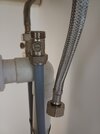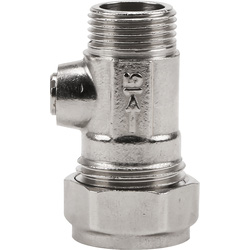1. Many plumbing fittings (but not pipes!) are still imperial, based round the nominal internal bore of the pipes they were designed to suit.
2. Thus you frequently get 1/2" British Standard Pipe (BSP), 3/4" BSP. You can also get, as you have, a continental manufacturer using 3/8" BSP.
3. The BSP threads come in two flavours, parallel (BSPP) and tapered (BSPT). The parallel threads are usually referred to as "G" something, such as G1/2
4. The easiest solution in your case is to get a pair of adapters, such as
Screwfix Item No. 6089R. Fit the plain end into the existing isolation valve and the end of the flexi hose onto the the G3/8 screwed end. Saves changing the isolation valves. You will also need two nuts and olives for the currently open end of the isolation valves. . Easiest way is to buy another isolation valve (e.g.
Screwfix Item 65251) and use the nuts and olives from one of them.




